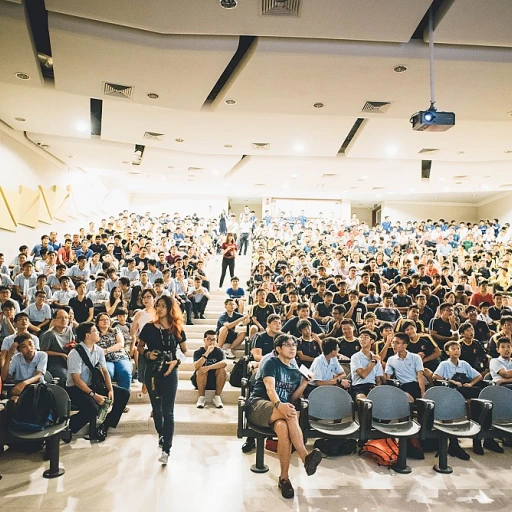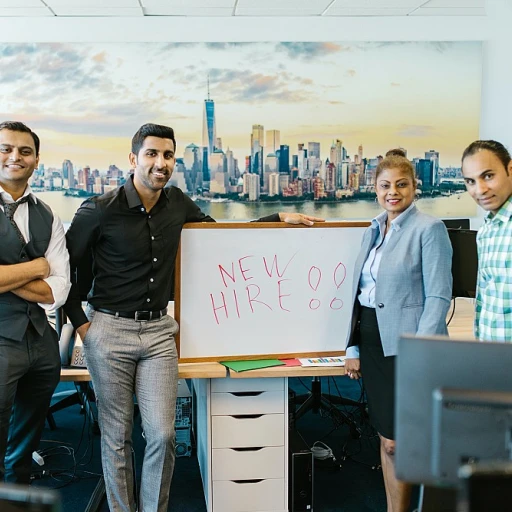
The Evolving Role of Workforce Integration Managers
The Transformative Role in Contemporary Times
As businesses continue to evolve in a rapidly changing environment, the role of a Workforce Integration Manager (WIM) has become more essential than ever. These managers are no longer merely overseeing superficial connections between workforce systems but are deeply involved in the integration process, ensuring seamless operation across time, payroll, and labor management systems.
The contemporary WIM must be adept with interfaces like Kronos workforce and UKG, leveraging their powerful data integration capabilities to create real-time labor solutions. They must ensure compliance with ever-evolving labor laws and workplace rules, which is a complex task given the diversity of workforce environments. They play a pivotal role in interfacing between systems, data, and people.
With technologies and platforms upgrading frequently, Workforce Integration Managers need to stay informed and keep their skills fresh by engaging in ongoing training. Their work demands a nuanced understanding of systems like Kronos Workforce Central and Kronos WIM, while effectively managing third-party integrations and data flows. To appreciate the dynamic role of a WIM, one needs to grasp the breadth and depth of their responsibilities, the challenges they face, and how they harness labor data for business success. Explore more about navigating HR data challenges on this informative guide.
Key Responsibilities and Skills Required
Core Competencies Required for Effective Workforce Integration
The role of a workforce integration manager is pivotal in synchronizing various systems and ensuring a seamless integration process. Mastery in the following areas is essential:- Data Management and Integration: It is crucial for an integration manager to have a deep understanding of data integration techniques. Familiarity with tools like Kronos and UKG Pro aids in effectively managing workforce data. Expertise in designing efficient interfaces for data systems is also important for creating a smooth data flow.
- Technical Proficiency: A thorough understanding of payroll systems, time management, and labor compliance ensures that integration processes align with legal standards and company policies. Experience with systems like Kronos Workforce Central is advantageous for managing complex labor data.
- Project Management: Effective workforce integration requires meticulous project management skills. Integration managers should be adept at coordinating efforts across multiple teams and third-party services, ensuring timelines and objectives are met.
- Communication and People Skills: In a managerial role, strong communication skills are indispensable. Integration managers must convey technical requirements to diverse teams, facilitate training sessions, and ensure all employees are aligned with the new integration systems and protocols.
- Problem-Solving Ability: Managers often encounter unforeseen challenges during the integration process. Being able to quickly identify issues, develop practical solutions, and adjust implementation plans is crucial.
Challenges in Workforce Integration
Common Obstacles in Workforce Integration
When it comes to workforce integration, navigating challenges is an inevitable part of the process for any integration manager. One of the primary hurdles is effectively managing various systems such as Kronos Workforce and UKG Pro to consolidate time data, payroll systems, and labor data. These systems often involve complex interface designs that require intensive efforts to synchronize with existing platforms.
Ensuring compliance with labor laws is another significant challenge, particularly when integrating employee time and labor data from various third-party integration services. Even a minor oversight in compliance can lead to substantial legal and financial consequences. Merging platforms like Workforce Central, creating a seamless interface designer, and establishing protocols to ensure data integrity is both complex and crucial.
Overcoming Technical Challenges
The process of merging disparate data systems, such as those provided by UKG, poses another technical challenge. The key lies in building a robust strategy that involves a deep understanding of data integration methodologies, ensuring real-time data updates, and aligning these with workforce management objectives.
A Kronos WIM (Workforce Integration Manager) must also address the technological gaps that arise from outdated or incompatible systems. Regular training for managers and employees to use new technologies can help ease the transition and improve engagement with the integration process.
Emphasizing the importance of a solid technical foundation, it's vital to utilize optimizing interface management for seamless operations. Managers need to ensure that both integration and ongoing operation processes are efficient and flexible enough to adapt to future changes.
Leveraging Data for Effective Integration
Harnessing the Power of Data for Seamless Workforce Integration
In the realm of workforce integration, data is a cornerstone resource for ensuring effective and streamlined processes. With the growing complexity of systems such as Kronos workforce management, UKG Pro, and other payroll systems, integration managers are finding innovative ways to leverage data to bridge the gaps between disparate systems.- Real-Time Data Utilization: Utilizing real-time data is critical to maintaining seamless operations. Integration managers need to ensure that time, labor, and payroll data are synchronized in real time across all platforms to avoid discrepancies and enhance operational efficiency.
- System Interface Design: A well-designed interface is key to facilitating smooth data integration. Effective interface design enables seamless data flow between systems, minimizing manual input and the risk of errors. This integration ensures that employee data is accurately captured and shared, supporting compliance with labor laws and company policies.
- Streamlined Data Interfaces: Third-party integration services play a significant role in developing efficient data interfaces. A proficient interface designer creates solutions that allow seamless data transfer between different systems, such as Kronos WIM and workforce central, ensuring that managers have access to the necessary labor data.
- Enhancing Training and Compliance: With a robust data integration framework, training programs can be significantly enhanced. Managers can ensure that all employees are trained efficiently and that compliance with labor laws and company rules is upheld, providing a secure and productive work environment.
Case Studies: Successful Workforce Integration
Learning from Real-World Successes
The role of a Workforce Integration Manager (WIM) is ever-evolving, and as previously discussed, their responsibilities continue to grow. Let’s dive into some exemplary case studies that highlight the effectiveness of integrating workforce systems. These examples not only showcase successful strategies but also emphasize the importance of data, time, and labor management.- Streamlining Payroll with Data Integration: A manufacturing company faced challenges with disparate payroll systems causing delays and compliance issues. By implementing a kronos workforce central solution with a well-designed interface, they ensured seamless data transfer between labor data and payroll systems. This transition reduced errors, improved compliance with labor laws, and optimized the overall payroll process.
- Real-Time Labor Management and Compliance: A retail chain successfully leveraged real-time data integration to manage workforce fluctuations efficiently. By integrating their kronos WIM with UKG pro, they achieved a smoother management of employee schedules and reduced time data discrepancies. This approach played a crucial role in maintaining compliance with local labor laws.
- Effective Employee Training through Integration: A healthcare provider utilized workforce integration to enhance their employee training programs. By interfacing their training systems with existing data kronos platforms, they ensured accurate tracking of employee progress and compliance requirements. This data-driven approach led to improved workforce performance and engagement.
- Third-Party System Integration Services: An e-commerce company partnered with an integration manager to connect multiple third-party systems. The use of kronos integration services helped streamline processes across various interfaces, leading to improved data accuracy, reduced labor costs, and better decision-making.












